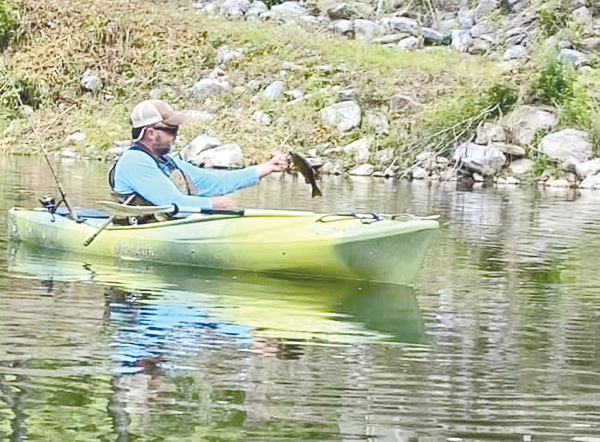No words, folks. I feel so bad for the family. Continued prayers to my friends in South Side. This little girl has been on our minds for the entire week. The community has thankfully responded. Hopefully, we will find some closure. The Susquehanna River is quite majestic. But with the high water, anything can happen. Thoughts to all of those involved. Please think before you post. This is a tragedy — no need to point fingers.
I purchased my first kayak a few years back, and I am so very glad. I needed something smaller than the family’s Old Towne canoe. It was originally a Mother’s Day present for Teach. She is still giving me the silent treatment. My little boat fits great, and I am starting to use it more and more. It’s so lightweight, and I no longer need any assistance getting her on and off the Jeep — no more scratches or dents. The legend lives on from the Chippewa on down. Gordon Lightfoot.
Paddling is very beneficial to both the mind and body. It provides great exercise and is another way to enjoy the spectacular scenery. From a distance, paddling seems rather simple. True, but I will say that it depends on what you have. A kayak is a tad more technical than handling a canoe. I DO NOT PADDLEBOARD. For this column, let’s focus on the smaller kayaks.
OK, folks. There is no need to buy a kayak before you try it. Paddling isn’t for everyone, and I highly recommend borrowing a buddy’s boat first. Several local shops even rent them. Heck. We have three. Give me a call, kids.
While your chums can help get you on the water, there is no guarantee that you will get a quick crash course. You need to know some basics. Many rookies develop bad habits that strain their necks, backs, and arms. This eventually leaves them discouraged, and they quit.
A decent understanding of the stroke will ensure your experiences in a kayak go smoothly. It’s important to know that the best paddlers use the least amount of energy. Sit up straight and face forward. Keep those hands and wrists in line with your arms. Lightly grip the paddle. It may seem natural to use just your arms, but the core is much stronger and will help you last a lot longer. Rotate your torso from left to right instead, making sure your back is pressed against the seat at all times. Sitting forward will not only shift your center, but it will also cause you to use more energy. To make a stroke, rotate your body to the right while reaching forward with the left side of the paddle. Simply dip the blade into the water and pull it back firmly while rotating your torso. Remember not to lean forward. When the left blade exits, the right should enter the water on the opposite side of the kayak. Pull back firmly and repeat the process. It’s working, E.T. It’s working!
It’s best to get started on a quiet lake or lazy river. I highly recommend Rose Valley in the 17728. Most streams and creeks can overwhelm those new to kayaking. Battling the current and avoiding snags shouldn’t be done the first time out. Once you think you are ready for a group outing down the Susquehanna River or Big Pine. Coordinating with a few friends makes the put-in and take-out rather easy. Be sure to pack plenty of water, snacks, sunscreen, an emergency whistle, and extra layers of clothing. A waterproof drybag is highly recommended and will come in handy if you plan to take your cell phone or camera. Have dry clothes available — especially in the early spring. I always keep a change of clothes inside the Jeep just in case.
The most important piece of equipment on any kayaking trip is your Personal Flotation Device. There are several types of PFDs, but Type IIIs are the only way to go. You should look for a comfortable vest that fits well but not too tightly, and helps you stay afloat. Every kayaker is required to have a PFD in their boat. RESPECT THE WATER. High levels make things difficult. Give a hoot. Don’t pollute. Enjoy the outdoors and leave no trace.
Hopefully, this write-up will get you on the water soon. Cheers.




